Analysis of Compensation System in Human Resource Management (HRM)
VerifiedAdded on 2019/09/30
|5
|447
|384
Report
AI Summary
This report provides an analysis of compensation systems within the context of Human Resource Management (HRM). It focuses on the roles and interests of key stakeholders, namely the CEO and Human Resource professionals, in implementing and managing compensation systems. The report highlights the CEO's interest in aligning compensation with company goals, improving employee performance, and attracting talent, while also considering cost-effectiveness. It also describes the responsibilities of the HR department in managing employee compensation, attendance, leaves, and incentives. Furthermore, the report emphasizes the importance of an efficient compensation system for employee satisfaction and organizational competitiveness, supported by references to relevant literature on compensation and incentive plan design. The report highlights the benefits of structured compensation systems, including improved efficiency in HR operations and the ability to support long-term sustainability and competitive advantage.
1 out of 5
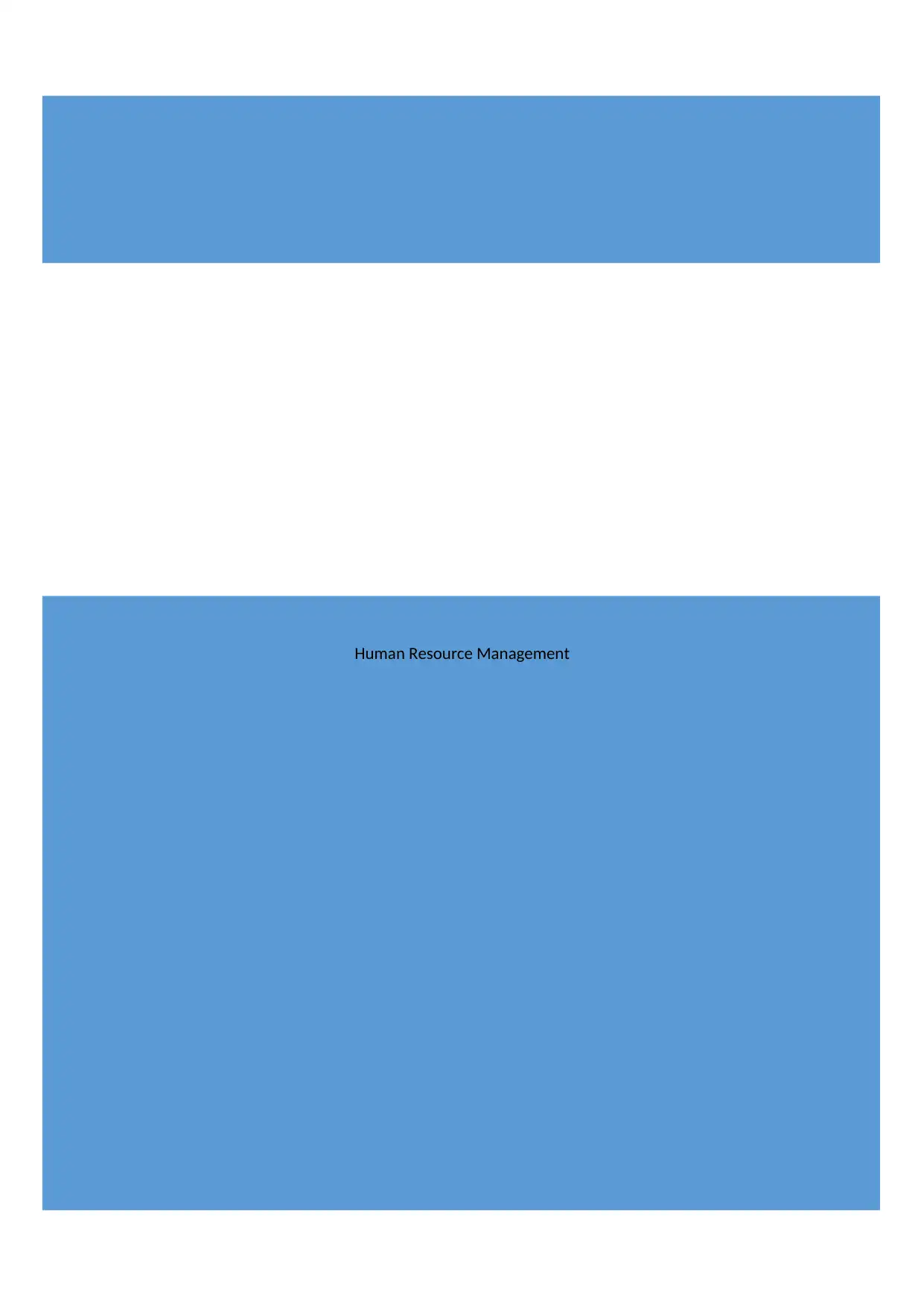
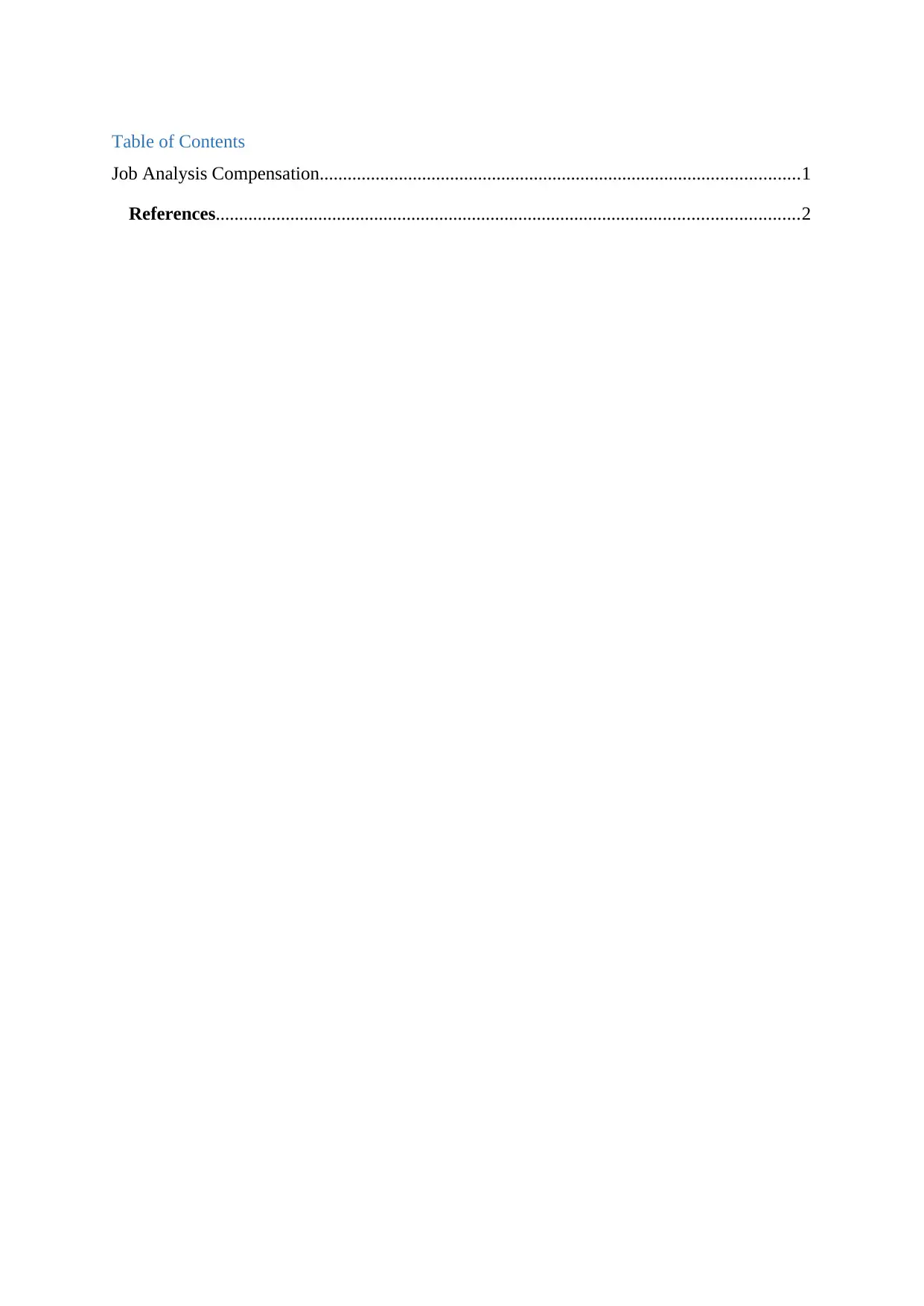
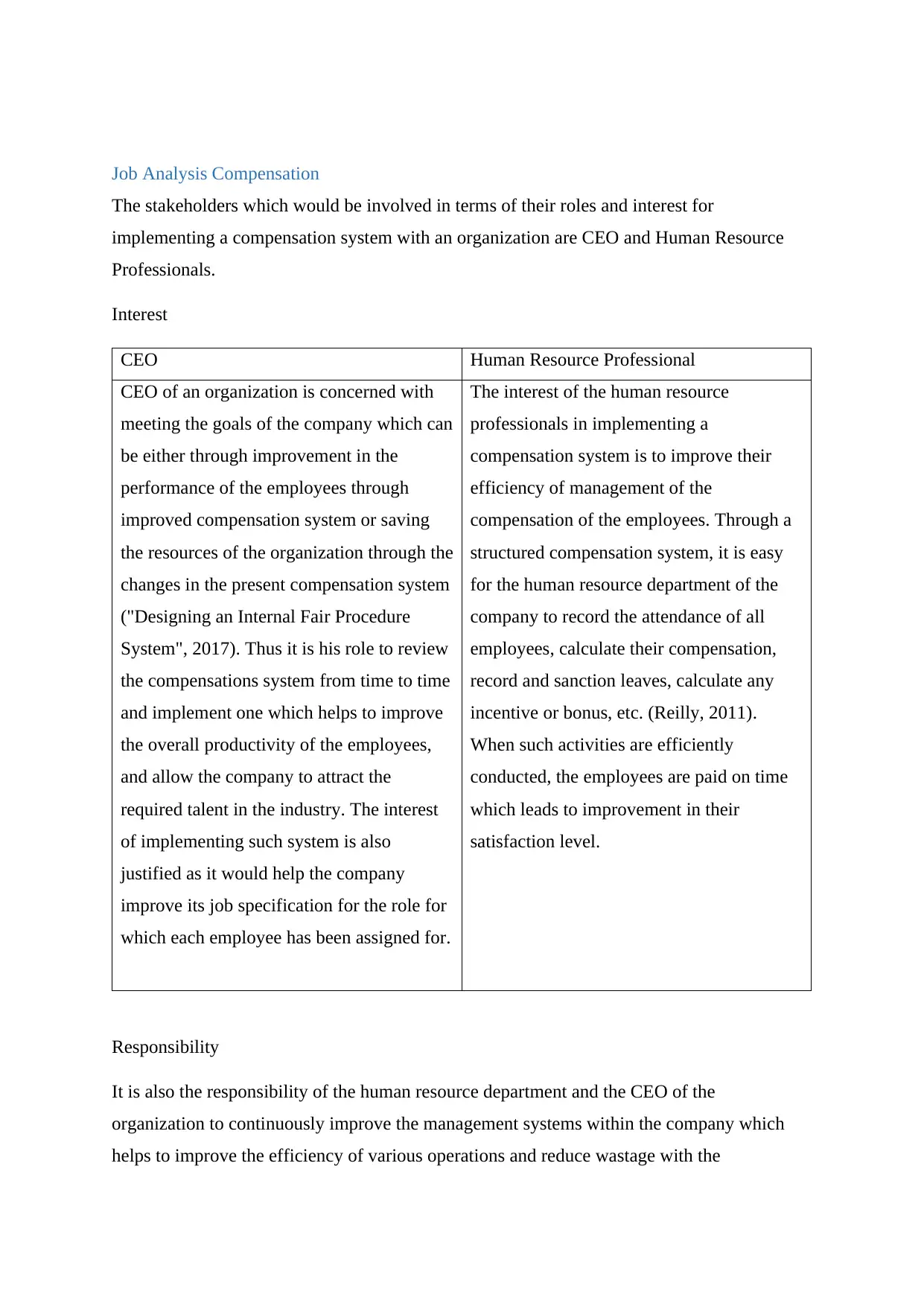
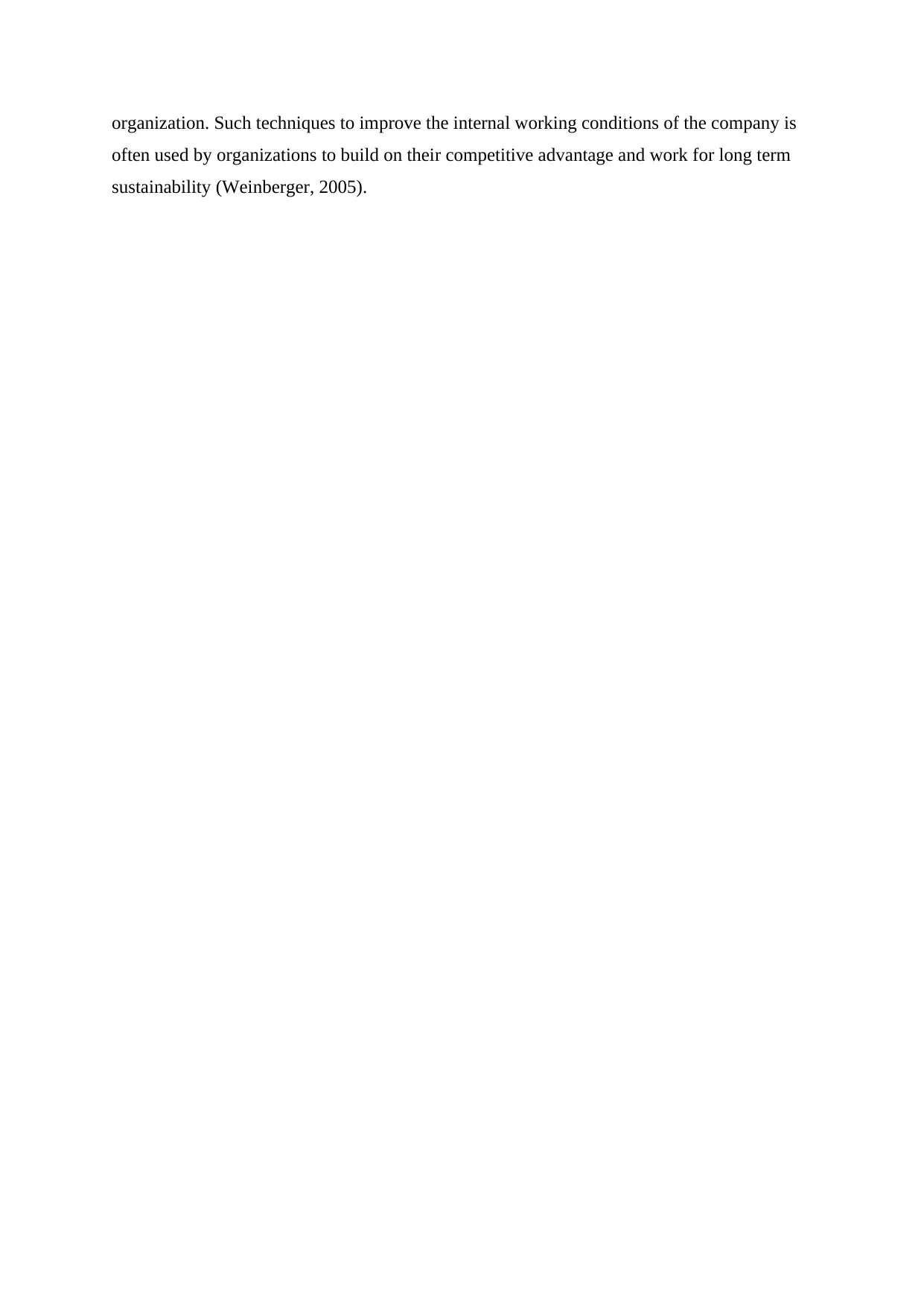
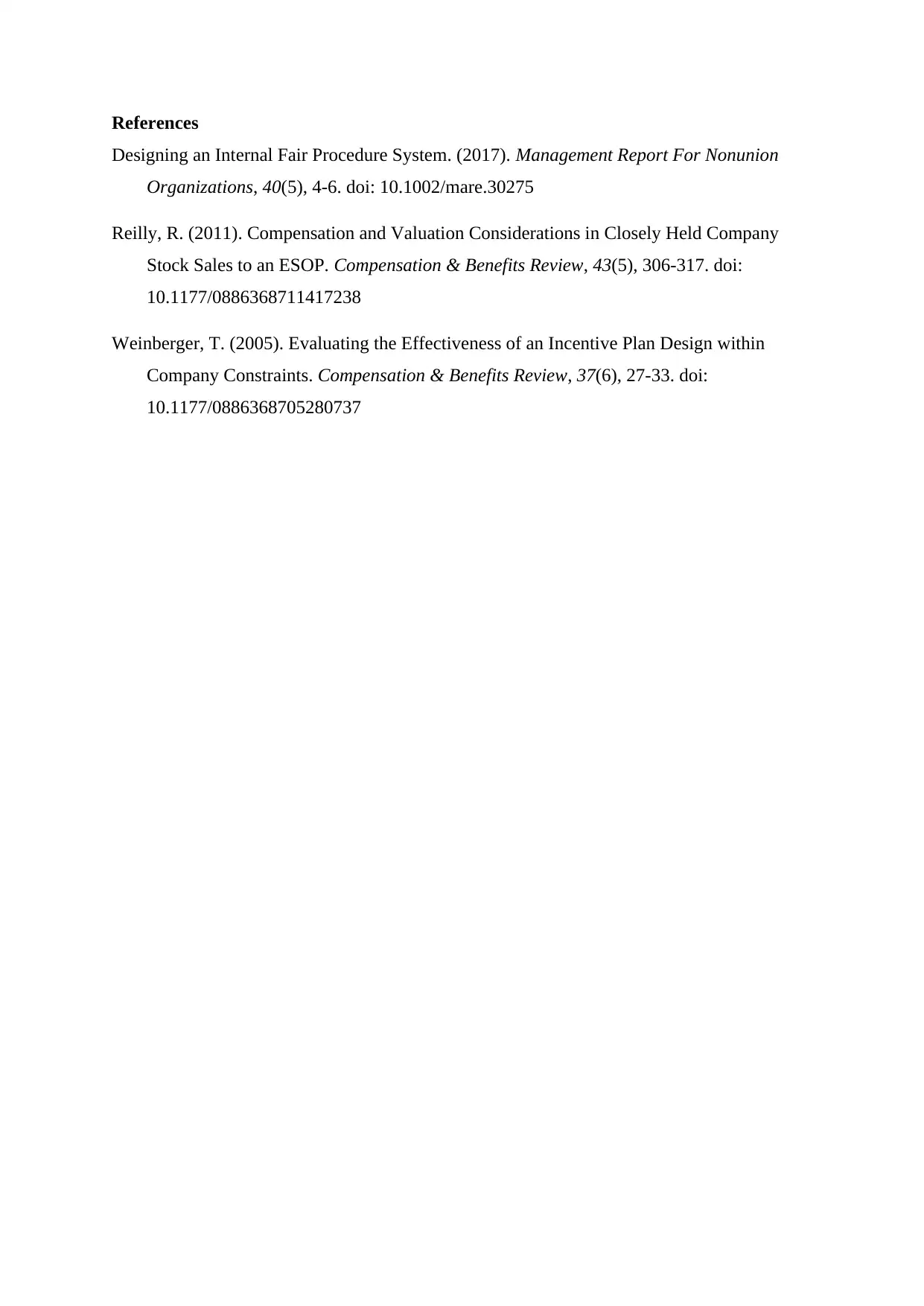






![[object Object]](/_next/static/media/star-bottom.7253800d.svg)